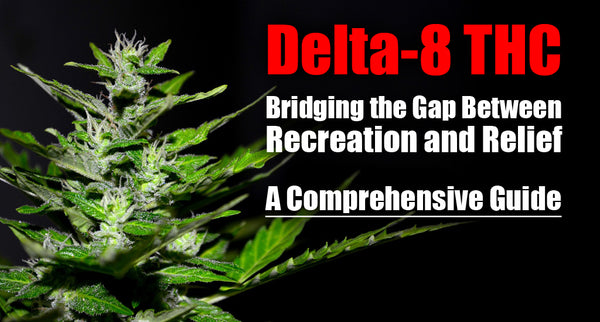
Step One: How to Build the Perfect Indoor Grow Room (For up to 6 Plants)
How to Build a Grow Room - Step by Step Guide

You can build a budget-friendly grow room with proper planning. Consider the size, ventilation, and reflective walls.
Plan ahead for your indoor marijuana grow room, considering budget and potential challenges. This article will guide you through the process and help you overcome obstacles. A successful indoor grow can be costly but offers rewarding returns financially, emotionally, and socially.
If you don't want to go through the building of your grow room, there are some plug and play options for you.
If you're not convinced yet, check our 5 Reasons Why You Should Grow Your Own Weed, and you will be.
1. Hydro or Soil for Your Indoor Grow Room?
The first step is to decide between hydroponics or soil for your growing method. Each option requires different systems, setups, and technologies.
Hydroponic systems are ideal for fast and efficient plant growth. However, they are more sensitive compared to soil setups. Even small changes can have significant impacts, and mistakes can lead to severe consequences.
While problems can quickly damage a crop in hydroponics, they can also be easily corrected if detected early. The reservoir can be drained and replaced promptly.
In hydroponic systems, deficiencies and other issues with cannabis plants can be resolved faster. Nutrients are readily available to the plants, and it is easy to adjust the nutrient content of the medium.
Growing weed hydroponically requires more space compared to soil grows because of the additional equipment needed, such as pumps, air pumps, and reservoir coolers.
However, if you're planning to grow only six plants, space shouldn't be a problem. It's important to know that hydroponic systems can be more expensive and complicated because you have to provide everything the marijuana plant needs.
Hydroponic growing has many benefits for experienced growers, but it can be difficult for beginners due to its specific requirements and sensitivities. If you're ready for the challenge, hydroponics can be a great hobby. However, if you want fewer problems and an easier learning experience, soil cultivation is usually recommended.
If you'd like to know more about the difference between Hydro or Soil, check this article from Herb.co: Super Soil #1: Soil vs. Hydroponic Systems. Also, check this video:
As for the recommended type of soil, there are too many recommendations out there, but to make it easy for you, we did our research and found out that FoxFarm Ocean Forest is the one for you, it's a soil product that commonly used, and recommended, by professional growers. It's available throughout the U.S. The manufacturer advertises their product as "safe to use right out of the bag and good for seedlings."
When it comes to choosing the right soil, there are numerous recommendations available. However, we have conducted research to simplify the process for you. Our findings suggest that FoxFarm Ocean Forest is highly suitable. This soil product is commonly used and recommended by professional growers. It is readily available across the United States. The manufacturer assures that their product is safe to use without any additional preparation and is particularly beneficial for seedlings.
2. Which Nutrients Should You Be Using?
To produce top-quality marijuana buds, it is crucial to give careful consideration to the fertilizer or nutrients required by your marijuana plants. The primary nutrients, also known as macronutrients, consist of mineral nutrients, including:
- Nitrogen (N)
- Phosphorus (P)
- Potassium (K)
- Calcium
- Magnesium
- Sulfur
And in smaller quantities, your cannabis crops will also need the following nutrients:
- Zinc
- Iron
- Manganese
- Molybdenum
- Chlorine
- Cobalt
- Silicon
- Boron
- Copper
In addition, there are non-mineral nutrients that you need not be concerned about, as the marijuana plant obtains them from the air and water. These non-mineral nutrients include Carbon, Hydrogen, and Oxygen.
Related article: Top 7 Online Stores for Marijuana Growing Supplies and Equipment
It is advisable to utilize specific nutrient products tailored to each stage of the cannabis growth process. Many manufacturers, like Fox Farms, offer a complete range of nutrients with detailed instructions on their combined or individual use. In our next post, we will delve into these nutrients, including how frequently to feed them to the plants.
3. Find a Place for Your Grow Room
Firstly, it is important to find an ideal indoor grow room that offers privacy and discretion for your marijuana cultivation, away from any interference by animals or people.
For growing 4-6 moderately sized plants, a space of approximately 15-20 square feet is recommended, which could be achieved with dimensions of around 4x4 or 4x5 square feet.
When growing at home, areas such as walk-in closets, garages, basements, or wardrobes tend to be suitable locations for a grow room. Alternatively, you can consider purchasing a grow tent or constructing one yourself, as demonstrated in the video below. If available, I personally suggest setting up a grow tent inside a walk-in closet.
Grow tents are a popular choice for most new growers as they offer a self-contained and cost-effective solution. They are relatively easy to set up, similar to a DIY grow chamber, and include ventilation ports and support beams for proper air circulation, as well as hooks for hanging lights and a fan/filter. In general, opting for a grow tent is recommended unless you have a very tight budget.
If possible, it is advisable to avoid selecting rooms on upper floors for your grow room due to the potential heat generated by direct sunlight. High temperatures, especially if they reach 90°F (32°C) or above, can be detrimental to your crop if they persist or occur frequently. Basements, on the other hand, are often preferable for cultivation as they naturally offer lower temperatures below ground level.
Creating a light-proof grow room is essential to prevent any light leakage and maintain control over the environment. Light seeping into the grow room during the plants' dark period can cause unnecessary stress and lead to issues such as "reveg" or "Hermie" in the plants.
In addition, it is important to ensure that the chosen location is clean to minimize the risk of diseases, molds, and pests affecting your plants. Keep the grow room away from pets, animals, and insects, and make sure it provides a comfortable working space for you to access and tend to your plants.
4. Ventilation for Your Grow Room
Ensuring proper airflow is crucial for marijuana cultivation. It is important to have a well-ventilated space to prevent the development of mustiness and molds. Adequate ventilation also helps in reducing heat and controlling humidity levels, thereby decreasing environmental stress on the marijuana plants and lowering the risk of pathogenic infection.
Many small-scale growers place fans inside the grow room to cool down the space and circulate the air effectively.
It is essential to pay close attention to air circulation and freshness, as well as the removal of hot air and excess humidity from the grow room, depending on your specific setup. Some growers create a hole in the closet or leave the grow room door slightly open. However, it is crucial to block most of the opening with a material like Panda Paper to prevent light leakage and maintain a controlled climate. Ducting and carbon filters can also be employed to minimize odors and regulate airflow.

Having proper airflow is vital for the health of your plants and maximizing your yields. It is recommended to have a ventilation system capable of exhausting at least one volume of the tent or room per minute, ideally two to three volumes per minute. If you reside in a warm climate without air conditioning, it is advisable to consider exhausting the air outside your home. Here is an example of a DIY window exhaust system:
This window exhaust unit is constructed using 1x3 ft. pressure-treated plywood. It features two 8-inch diameter holes, which are carefully cut using a jigsaw. Two 8-inch duct collars are attached to the plywood using adhesive and screws.
Each collar is connected to exhaust ducting from separate tents, one for flowering and the other for vegetative growth. Ducting clamps are used to secure the ducting in place. The total cost of this window exhaust setup, including the ducting, was under $50 USD and could potentially be done for even less.
5. Preparing The Grow Room Walls
To maintain a well-controlled environment and maximize the effectiveness of your grow room's lighting and energy usage, it is recommended to install reflective material on the inner walls of your grow room.
Grow tents are often designed with highly reflective surfaces on the inside, making them an excellent choice for new growers.
Avoid using tin foil to line the walls as it can create hotspots and is not as effective as you might think. Instead, consider painting the walls inside the grow room with a bright white color.
The key aspect to remember at this stage is to ensure that the lights are concentrated on your plants and arranged in the most efficient manner possible. The reflective wall material surrounding your plants will ensure efficient light coverage, minimizing wastage and maximizing the benefits for your crops.
6. Putting Up Your Grow Room Lights
There are multiple different kinds of lights that most growers would consider using, but they fall into two general categories:
- LED
- Fluorescent
- High Intensity Discharge (HID, such as metal-halide or high pressure sodium)Some of the high-end LED lights and HPS systems include built-in fans, would be nice to look into those.
Related article: What Lights Do Professional Growers Use?
Fluorescent and HPS (High-Pressure Sodium) lights have a tendency to generate more heat compared to LED lights. If you choose to use fluorescent or HPS lights, it is important to closely monitor the temperature inside the grow room. Adding additional fan(s) becomes crucial in order to maintain optimal temperatures. On the other hand, LED lights are a favorable choice for growers who lack air conditioning or other means of temperature control, as they produce less heat in comparison to HID and fluorescent systems of similar power.
For small scale hobby growers; Compact fluorescent lights, such as T-5s or CFLs, is the way to go. For the following reasons:
- Compact fluorescent lights are cheaper to set up. Furthermore,reflector, ballast, and bulbs are included in every package.
- Energy efficient and they offer the perfect light spectrum for your marijuana plants.
They release very little heat, and due to that, they can be placed as low as you want them to the plant, which will help to penetrate larger area of your plants, and efficiently get the light to shade the lower parts of your marijuana plants.
Related article: Just How Good Are LED Lights for Growing Cannabis?

Please note that fluorescent lights produce approximately 25-30% less light per watt of electricity consumed, making them less efficient compared to other methods. However, for small-scale growers, efficiency may not be a significant concern.
If you have plans to expand and engage in larger-scale marijuana cultivation operations, efficiency will play a crucial role in your expenses and the quality of your buds. In such cases, exploring alternative methods would be advisable.
LED lights typically yield around 0.5 grams per watt, but high-quality LED models can surpass 1 gram per watt. However, it is important to note that these top-performing models can be quite expensive.
For LED lights, it is recommended to provide your plants with approximately 30 watts of light per square foot. In the case of HID (High-Intensity Discharge) lighting, 50 watts per square foot is considered sufficient.
Take a look at this guide on lighting PAR, to help you decide what light you should use.
Just a quick heads up, you can find all types of growing lights on Dealzer.
The quality of LEDs can vary significantly compared to CFL and HID light sources. It is important to note that cheaper LEDs may experience diode failures after only a few growing cycles in many instances.
When purchasing LEDs, it tends to run true that you get what you pay for. It is best to consider LED manufacturers that have strong reputations and good reviews.
HID lights, including high-pressure sodium (HPS) and metal-halide (MH), tend to generate significantly higher temperatures compared to LED and CFL light sources. This can present a serious challenge for growers who lack air conditioning or other temperature control methods. While HID lights are typically less energy-efficient than comparable LED lights, they are more affordable in terms of initial setup costs.
Many experienced growers argue that when it comes to yield, watt for watt, LEDs cannot compete with HID lights. This claim holds some truth, but as LED technology advances, they are starting to surpass HID lighting in terms of performance.
However, this doesn't mean that LEDs cannot produce high-quality cannabis; they certainly can. But to achieve the same results as HID lights, you may need to use more powerful LED lights.
For growers who have air conditioning and are willing to accept a slightly higher fire hazard, HID lights are likely the best option. They require a smaller upfront investment, are known for delivering impressive outcomes, and exhibit minimal variation between manufacturers. On the other hand, LEDs show significant variations in quality among manufacturers and are often viewed with skepticism by experienced growers. The optimal choice for a new grower depends on the specific circumstances of their cultivation operation.
Lights Installation Tips
When installing the lights, there are a couple of things you need to consider:
- Make sure the electric parts (for the lights, fans or any electrical equipment/devices you're using) are securely connected and protected from damage. Remember, you will have to water your plants frequently, and it's hazardous to have uncovered, unprotected and unsecured electrical cabling around.
- Better to hang the lights with adjustable chains; as your marijuana plants grow, you will need to adjust the lights upward. Here’s a great product for hanging lights and ventilation systems.
- Lights should be kept at least one foot below the ceiling.
- Depending on the wattage and type of light, lights should be kept between 8 and 31 inches away from plants. Lights around 150 watts can be kept around 8 inches away from the plant, however, lights as high as 1000 watts should be kept at least 31 inches away from the top of the plant. See these light distance charts for what height your light should be at.
- Maximizing your light: indoor marijuana growing rooms require a minimum 33 watts per square foot.
7. climate management

There are three more important environmental factors you need to consider when you're managing your grow room; temperature, humidity, and CO2. Here are few climate manager tools you can use:
- Humidifiers
- Dehumidifiers
- Humidistat
- Thermometers
- Fans
- CO2 drips/CO2 generators
Temperature and humidity will vary significantly depending on the climate in your region. For new growers, CO2 should not be a primary concern. Only in large-scale cultivation operations, once all other conditions are close to ideal, CO2 supplementation may be considered. As a new grower, the most crucial factors to prioritize are proper ventilation, temperature control, lighting conditions (including the appropriate amount of light and ensuring a sealed grow space to prevent leaks), and avoiding over-watering and over-fertilizing.
If you have a limited budget, it is advisable to focus on acquiring a suitable tent, lights, and setting up ventilation fans and ducting, along with air conditioning if necessary.
After setting up your grow room, it is recommended to test the climate inside for a few days before introducing your cannabis plants and initiating the growth process. This includes monitoring and adjusting the temperature, humidity level, and lighting as needed. If the lights generate excessive heat, you can introduce a fan to mitigate it.
However, be mindful that adding a fan may lead to dryness, in which case a humidifier might be necessary. It may require some trial and error to find the optimal combination of lights, temperature, and humidity.
Initially, it is preferable to maintain a temperature range of 65 to 80°F (18 to 26°C). However, as your plants progress through different growth stages, specific temperature and humidity levels may be required.
Young plants, including seedlings and cuttings, thrive in higher temperatures and humidity. As plants progress from their early stages to vegetative and flowering phases, they prefer slightly cooler temperatures (generally not below 65°F) and lower humidity (generally not below 40% relative humidity).
If you intend to cultivate numerous seedlings, such as for a sea of green setup or for taking many clones from a mother plant, it might be worth considering the use of a heating pad and/or an aeroponic cloning system.
Aeroponic cloners offer a straightforward and efficient method for rapidly rooting clones, and they can be assembled inexpensively. To create your own aeroponic cloner, you will need a 3 or 5-gallon bucket, a pump capable of moving approximately 400 gallons per minute, PVC piping, nozzles, a drill, and a jigsaw or another cutting tool to create holes in the lid. The total cost of materials should be under $30 USD.
8. Wire Greenhouse Bench And Place in Your Cannabis Plants

Once you have regulated the climate inside your grow room, it is time to establish your setup. It is advisable to elevate your marijuana plants slightly off the ground to prevent the negative effects of a cold surface on the root zone temperatures. Additionally, ensuring airflow underneath and around the plants is crucial.
Using racks not only helps maintain organization within the grow room but also facilitates easier cleaning of potential spills and debris, as well as enables smooth movement of plants during the harvest phase. When growing in soil, it is recommended to cover the grow room floor with a collection of racks. These racks can be as simple as wire Greenhouse benches where your marijuana plants can be placed.
Regarding the placement of pots for soil and planting marijuana seeds, it is generally recommended to keep them at least 3 to 4 inches apart at the base.

Final Consideration
After completing your initial harvest and before beginning a new growing cycle, it is advisable to thoroughly clean and disinfect the entire grow room using a potent cleaning agent. This precautionary measure helps prevent the introduction of any potential bacteria or parasites that may harm your new crops.
Here is our complete Step by Step Beginners Guide to grow marijuana Indoors
- Step One: Choose the right strain/seeds. Here are the Best Marijuana Seed Banks
- Step Two: How to Build the Perfect Indoor Grow Room (For up to 6 Plants)
- Step Three: Germinating Your Marijuana Seeds and The Seedling Stage
- Step Four: Marijuana Vegetative Stage
- Step Five: Flowering Stage
- Step Six: Harvesting and Drying
- Step Seven: Curing and Trimming




